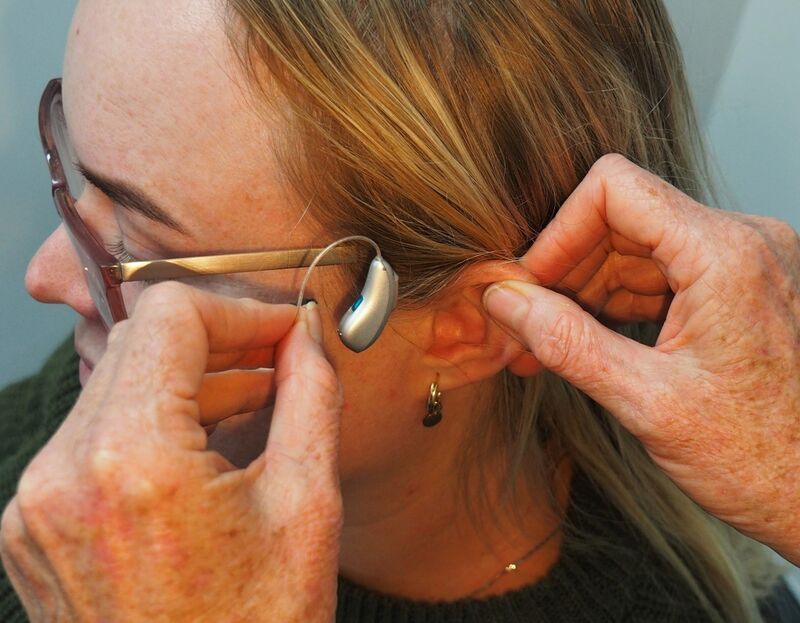
What comes to mind when you think of hearing loss? Do you picture a young child, perhaps who was born deaf, with a cochlear implant? Do you see a middle aged woman with mild to moderate hearing loss who uses hearing aids? Or do you think of an older adult whose hearing has gotten worse as they have gotten older?
While it can be common to think of hearing loss as being associated with older adults and aging populations, hearing loss can and does occur at any age. The National Institute on Deafness and Other Communication Disorders reports the following statistics about hearing1:
- Of American adults 18 years of age and older, approximately 15% (or 37.5 million) report some trouble hearing
- One in eight people in the United States who are 12 years of age or older has hearing loss in both ears when evaluated with standard hearing examinations
- 28.8 million adults in the United States could benefit from using hearing aids
- Only about one-fifth of people who could benefit from hearing aids use them2
Although these facts tell us hearing loss is quite common, hearing aid users wait an average of 10 years before getting help for hearing loss3. As someone with hearing loss who is a newer hearing aid user, this fact rings quite true for me personally. While I didn’t wait quite as long as 10 years to get my hearing tested, it took many years of noticeable hearing difficulties and the “free time” that came with the pandemic before I was able to fully accept that something was not working normally and seek out medical care for this issue. Even though my professional career has been devoted to supporting and advocating for people with disabilities, I still struggled with my own stigmas about hearing loss and using hearing aids. Now that I am on the other side, I am here to tell you that hearing aids have changed my life for the better and allowed me to more fully engage in my valued life activities.
Impacts of Untreated Hearing Loss
One of the bigger events that led me to making an appointment with my audiologist was when a pipe in the crawl space of my home burst, and I didn’t hear it. Thankfully my husband was also home and able to react, but if I had been home alone the outcome could have been far more significant. This is just one potential impact for people who have untreated hearing loss, others can include:
- Social isolation, if engaging in conversations is a struggle due to hearing loss or difficulty filtering out voices from background noise
- Increased risk of falls or difficulties with balance
- Other safety concerns while walking or driving
Additionally, a Johns Hopkins study found that people with mild hearing loss had twice the risk of dementia as those without hearing loss3. The risk was tripled for those with moderate hearing loss, and for those with severe hearing loss the risk of dementia was five times more likely than those without hearing loss.
Barriers to Treating Hearing Loss
In addition to stigma about hearing loss and using hearing aids, a primary barrier to treatment for this condition can be the cost of hearing aids. In my own hearing loss journey, it took 15 months of back and forth with my private health insurance to have my hearing aids approved and paid for. This was after my audiologist had gotten pre-authorization and I had gotten written confirmation of my insurance coverage for hearing aids.
While I am fortunate that I would have been able to afford my hearing aids out of pocket if my insurance did not pay, that is not the case for everyone. While the price of hearing aids varies, an average cost for hearing aids and the professional services to adjust them to fit the needs of the individual using them is estimated to be $4,7004. Even though hearing loss is more common in older adults than other age groups, Medicare has never covered the costs of hearing aids.
Thankfully, recent changes are beginning to open the doors for more affordable options for hearing aids. In October, 2021 the FDA proposed a rule to allow for over the counter (OTC) hearing aids for mild and moderate hearing loss2. This will allow for easier access and increase market competition to help bring down costs of hearing aids, while also potentially increasing use and awareness of hearing aids which may help decrease social stigmas about hearing aid use.
Additionally, current legislative efforts such as the Build Back Better Act of 2021 include provisions to expand Medicare to cover hearing aids and associated services5. This change, if passed, could enable individuals who rely on Medicare and who need hearing aids to afford them for the first time, especially for individuals with more severe hearing loss for whom the OTC hearing options would not be appropriate.
These are great first steps towards making hearing aids and associated care more accessible and affordable for those who need them. While there is more to be done to decrease stigma of hearing loss and hearing aid use, affordable options to ease the burden for millions of Americans with hearing loss is a key place to start.